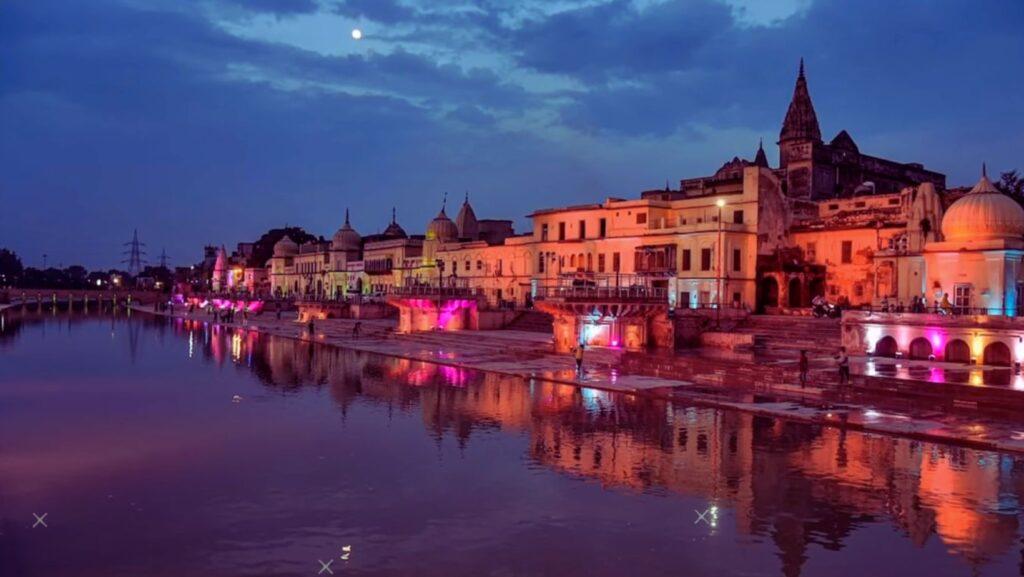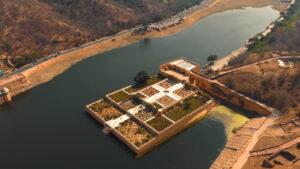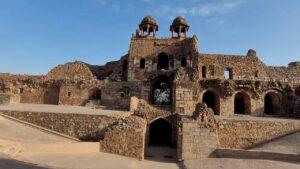Ayodhya: City of Faith, Culture, and Wonder
Ayodhya, the ancient city of India, is a place of immense significance for millions of people around the world. It is believed to be the birthplace of Lord Ram, the seventh incarnation of Lord Vishnu and the hero of the epic Ramayana.
Ayodhya is also a sacred pilgrimage destination for Hindus, Buddhists, Jains, and Sikhs, who visit the city to pay their respects and seek blessings.
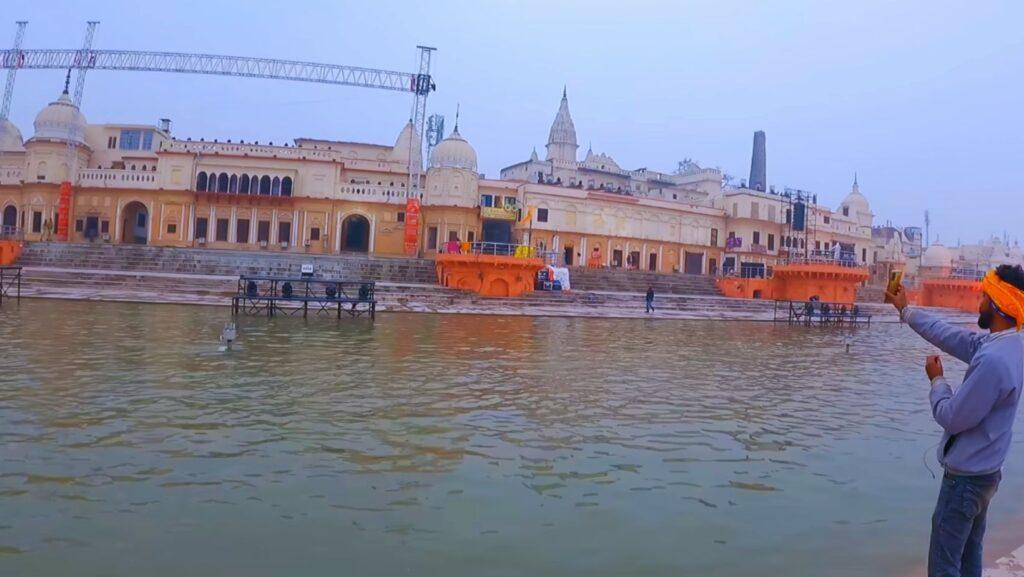
Ayodhya is not only a city of faith, but also a city of culture and wonder. It has a rich and diverse heritage, spanning thousands of years of history, art, and architecture. It also has a vibrant and modern outlook, with many attractions and facilities that cater to the needs and interests of the visitors. Top 10 reasons to visit Ayodhya and discover its wonders for yourself.
You May Read
Reason 1:
Experience the spiritual aura of the Ram Temple, the birthplace of Lord Ram and a symbol of India’s ancient heritage.
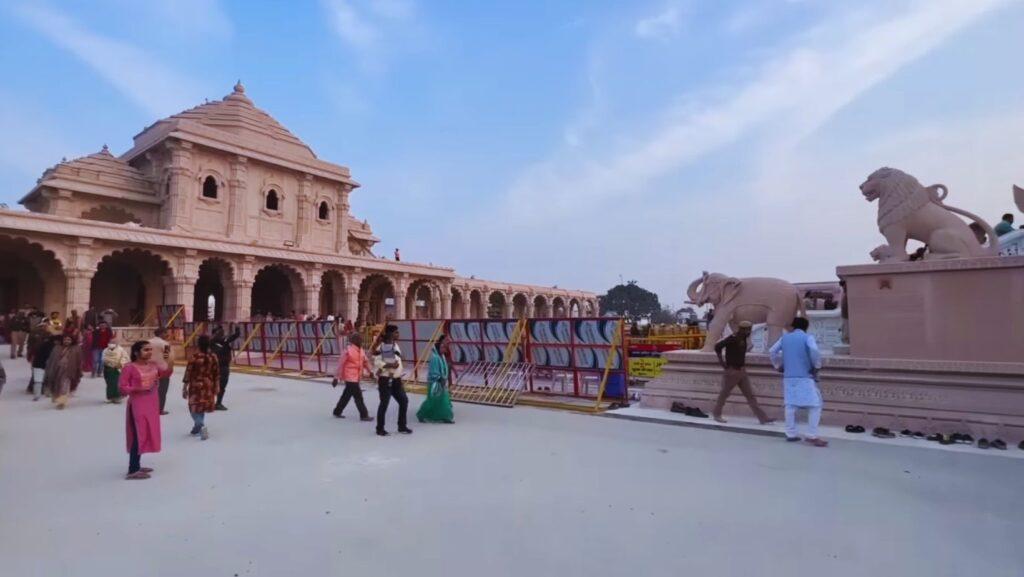
Ram Temple, also known as the Ram Janmabhoomi Mandir, is the main attraction of Ayodhya. It is the site where Lord Ram is believed to have been born and spent his childhood.
Temple is a magnificent structure, built with pink sandstone and marble, and adorned with intricate carvings and sculptures. The temple complex also houses a museum, a library, a meditation hall, and a garden.
The Ram Temple is a place of worship and devotion, where thousands of pilgrims and tourists flock every day to offer prayers and perform rituals. The temple is also a place of peace and harmony, where people of different faiths and backgrounds come together to celebrate the life and teachings of Lord Ram.
Reason 2:
Witness the architectural marvel of the temple complex, featuring intricate designs, sculptures, and artwork.
Ram Temple is not only a spiritual destination, but also an architectural marvel. The temple complex covers an area of 67 acres, and consists of three domes, five mandaps, and 360 pillars. The temple is designed in the Nagara style of architecture, which is characterized by curvilinear spires, ornate facades, and geometric patterns.
Temple also showcases the craftsmanship and artistry of the Indian artisans, who have created exquisite sculptures and paintings depicting scenes from the Ramayana and other Hindu scriptures. The temple is a feast for the eyes, and a testament to the glory and grandeur of India’s ancient culture.
Reason 3:
Participate in the cultural festivities and rituals of the city, such as Ram Navami, Diwali, and Aarti.
Ayodhya is a city that celebrates its culture and traditions with fervor and joy. The city hosts many festivals and events throughout the year, that attract visitors from far and wide.
- One of the most important and popular festivals is Ram Navami, the birthday of Lord Ram, which falls in the month of March or April. On this day, the city is decorated with lights, flowers, and flags, and a grand procession of chariots, elephants, and horses is taken out from the Ram Temple to the Sarayu River. The devotees also sing bhajans, chant mantras, and perform puja and abhishek to Lord Ram.
- Another major festival is Diwali, the festival of lights, which commemorates the return of Lord Ram to Ayodhya after defeating Ravana. On this day, the city is illuminated with lamps, candles, and fireworks, and people exchange gifts and sweets.
- The city also conducts a daily ritual of Aarti, which is a ceremonial offering of fire and flowers to the Sarayu River. The Aarti is performed by priests and devotees, who chant hymns and prayers, and wave lamps and incense. The Aarti is a spectacular sight, especially in the evening, when the river reflects the glow of the flames and the sound of the bells and conches fills the air.
Reason 4:
Explore the other historical and religious sites of the city, such as Hanuman Garhi, Kanak Bhawan, Nageshwarnath Temple, Tulsi Smarak Bhawan Museum, Sita ki Rasoi and Treta ke Thakur.
Ayodhya is home to many other historical and religious sites, that are worth visiting and exploring.
Hanuman Garhi
One of them is Hanuman Garhi, a temple dedicated to Lord Hanuman, the loyal devotee and companion of Lord Ram.
Kanak Bhawan
Kanak Bhawan, a palace where Lord Ram and his wife Sita lived after their marriage. The palace is also known as Sone ka Ghar, or the house of gold, because of its golden walls, pillars, and domes. The palace has idols of Lord Ram and Sita, dressed in gold and silver, and adorned with jewels and flowers. The palace also has a museum, a gallery, and a garden.
Nageshwarnath Temple
Nageshwarnath Temple, a temple dedicated to Lord Shiva, the destroyer of evil. The temple is said to have been built by Kush, the son of Lord Ram, who found a snake worshipping a Shiva lingam in the forest. The temple has a beautiful spire, a carved doorway, and a large pond. The temple is also the venue of an annual fair, called the Nageshwarnath Mela, which is held in the month of February or March.
Treta ke Thakur
Treta ke Thakur, a temple that marks the spot where Lord Ram performed the Ashwamedha Yagna, a horse sacrifice ritual, to prove his supremacy and righteousness. The temple has idols of Lord Ram, Sita, Lakshman, and Hanuman, made of black sandstone. The temple also has a well, which is said to have been dug by Lord Hanuman to quench the thirst of the horses.
Reason 5:
Enjoy the scenic beauty of the Sarayu River and the Ram ki Paidi, a series of ghats along the river bank.
Sarayu River, also known as the Ghaghara River, is a sacred river that flows through Ayodhya. The river is associated with many legends and events of the Ramayana, such as the birth of Lord Ram, the exile of Lord Ram, and the immersion of Lord Ram’s ashes.
River is also a source of life and livelihood for the people of Ayodhya, who depend on it for water, agriculture, and fishing. The river offers a serene and picturesque view, especially during sunrise and sunset, when the sky and the water change colors and create a magical effect.
River also has a series of ghats, or steps, along its bank, called the Ram ki Paidi. The Ram ki Paidi is a place where people come to take a dip, perform rituals, and enjoy the beauty of the river.
Ram ki Paidi is also a place where many cultural and religious events are held, such as the Aarti, the laser show, and the cruise.
Reason 6:
Visit the Bahu Begum Ka Maqbara, a stunning example of Mughal architecture and a symbol of communal harmony.
Ayodhya is not only a city of Hindu temples, but also a city of Muslim monuments. One of them is the Bahu Begum Ka Maqbara, a mausoleum built by Nawab Shuja-ud-Daula, the ruler of Awadh, for his wife Bahu Begum, in the 18th century.
The mausoleum is a stunning example of Mughal architecture, featuring a dome, minarets, arches, and gardens. The mausoleum is also a symbol of communal harmony, as it was built by a Muslim ruler for his Hindu wife, who converted to Islam after marriage. The mausoleum is a place of respect and reverence, where people of different faiths and backgrounds come to pay their homage and admire its beauty.
Reason 7:
Learn about the Ramayana and Lord Ram’s life through the Ram Katha Park and the Tulsi Smarak Bhawan Museum.
Ayodhya is a city that is deeply connected to the Ramayana, the epic poem that narrates the story of Lord Ram and his journey from Ayodhya to Lanka.
The city has many places that depict and celebrate the Ramayana and Lord Ram’s life, such as the Ram Katha Park and the Tulsi Smarak Bhawan Museum. The Ram Katha Park is a theme park that showcases the various episodes and characters of the Ramayana, through statues, sculptures, and paintings.
Park also has a musical fountain, a toy train, and a children’s play area. The park is a place of entertainment and education, where people can enjoy and learn about the Ramayana and Lord Ram’s life. The Tulsi Smarak Bhawan Museum is a museum that displays the works and belongings of Goswami Tulsidas, the 16th century poet and saint, who wrote the Ramcharitmanas, the Hindi version of the Ramayana.
The museum also has a library, a hall, and a garden. The museum is a place of inspiration and admiration, where people can appreciate and understand the contribution of Tulsidas to the Indian literature and culture.
Reason 8:
Experience the modern attractions of the city, such as the laser show, the cruise, and the Maharishi Valmiki International Airport.
Many attractions and facilities that cater to the needs and interests of the visitors. One of them is the laser show, a spectacular display of lights, sounds, and images that narrates the story of Ayodhya and Lord Ram.
Laser show is held every evening at the Ram ki Paidi, and is a must-watch for anyone who visits the city. Another attraction is the cruise, a boat ride that takes the visitors along the Sarayu River, and offers a panoramic view of the city and its landmarks.
The cruise is a relaxing and enjoyable way to experience the beauty and charm of Ayodhya.
Another facility is the Maharishi Valmiki International Airport, a state-of-the-art airport that connects Ayodhya to the rest of the world. The airport is named after Maharishi Valmiki, the author of the original Ramayana, and is designed to reflect the culture and heritage of Ayodhya. The airport is a convenient and comfortable way to travel to and from Ayodhya.
Reason 9:
Support the local economy and community of Ayodhya, by staying in the hotels, homestays, and lodges, and shopping in the markets and bazaars.
Ayodhya is a city that is not only a tourist destination, but also a living and thriving community. The city has many hotels, homestays, and lodges, that offer accommodation and hospitality to the visitors.
Visitors can choose from a range of options, from luxury to budget, from traditional to modern, from urban to rural. The visitors can also interact with the local people, and learn about their culture, lifestyle, and stories.
Also has many markets and bazaars, that sell a variety of goods and products, such as handicrafts, souvenirs, clothes, jewelry, books, and food. The visitors can shop for themselves or for their loved ones, and also support the local economy and artisans.
Visitors can also taste the local cuisine, which is a blend of Awadhi, Mughlai, and North Indian flavors. The visitors can enjoy dishes such as kachori, chaat, lassi, biryani, kebab, and sweets.
Reason 10:
Relax and rejuvenate in the peaceful and serene environment of the city, away from the hustle and bustle of daily life.
Ayodhya is a city that is not only a place of activity and excitement, but also a place of tranquility and calmness. The city has a peaceful and serene environment, that soothes the mind, body, and soul of the visitors.
Ayodhya city has a pleasant and moderate climate, that is neither too hot nor too cold. The city has a green and clean atmosphere, that is free from pollution and noise. The city has a spiritual and positive vibe, that fills the visitors with hope and happiness. The city is a perfect place to relax and rejuvenate, away from the hustle and bustle of daily life. The visitors can meditate, yoga, read, write, or simply enjoy the silence and solitude of the city.
Ayodhya is a city that has something for everyone. It is a city of faith, culture, and wonder. It is a city that offers a unique and unforgettable experience for every traveller. It is a city that is worth visiting and exploring. If you are looking for a destination that will enrich your knowledge, enhance your skills, inspire your creativity, and awaken your spirituality, then Ayodhya is the place for you.
Also Read: Places to Visit in Ayodhya
Don’t wait any longer, book your tickets and plan your trip to Ayodhya today, and discover its wonders for yourself.
